Celebrate USA TODAY's 40th anniversary with these 40 moments when the newspaper made a difference to its readers, our nation and its staff.
Coming up with a Top 40 in the era of Everything Goes Viral can only spark endless arguments and “whataboutism.”
But everyone loves round numbers, and USA TODAY’s 40th anniversary – remember, some predicted it would not last 40 weeks – should not be ignored. And what better way to celebrate than highlighting 40 moments to mark our anniversary on Sept. 15?
How to do it? We did not want simply an almanac-type list of the 40 biggest stories over four tumultuous decades. Even using circulation figures (old metric) or pageviews (new), measuring journalism goes beyond audience, although (a nod to reality), audience is always nice.
No, the best way to measure journalism, we decided, was by its impact. Did our reporting change things for the better? Hold people accountable? Right hidden wrongs? Or sometimes bring a smile? Was our writing memorable, our photography compelling, our graphics fact-filled?
And did USA TODAY’s brash new way to deliver the news – short and to the point with lots of entry points and color – mark an inflection point for the newspaper industry that at first rejected us? Or did it, as some smartly think, serve as a template for the internet?
Impact seemed a better way to go. So this will not be a listing of the biggest events of the past 40 years, although USA TODAY did cover seven presidents (from Reagan to Biden), three impeachments (Clinton and Trump twice, all acquitted), the 9/11 terror attacks and ensuing wars, along with 21 Olympics, 39 Super Bowls, several recessions, the death of the King of Pop (Michael Jackson), a princess (Diana), and one Trial of the Century (O.J. Simpson).
What became apparent as we flipped through 480 months of news was how often USA TODAY made a difference:
- TV ads during the Super Bowl were becoming big business, but were they effective? We brought political focus group thinking to coverage, unveiling the USA TODAY Super Bowl Ad Meter at Super Bowl XXIII in 1989. Now an online perennial, it has been a part of the Big Game ever since.
- From the start, USA TODAY pushed for diversity, within its newsrooms and in the culture. An examination of Supreme Court clerks in 1998 found only 2% were Black; entertainment reporters in 2016 revealed that movies and TV shows continued to fail at representing minorities, in front of or behind the cameras.
- Want impact? Our coverage in 1996 of how dangerous air bags were to children sitting in front seats, helped lead to the warning sticker now found inside car windshield visors. In 2014, then-Defense Secretary Robert Gates told Congress he learned about better ways to protect U.S. troops from roadside bombs from USA TODAY.
- We offered unprecedented looks at the inner games of sports – annual looks at how much college coaches were paid, the lack of diversity of NFL coaches, expanded baseball statistics and every Olympics event every day. We also opened up the world of high school sports, even naming high school athletes of the year. (A shortstop from Kalamazoo, Michigan, Derek Jeter, was high school player of the year in 1992.)
- And we had fun. One reporter, Tim Friend, visited the Titanic and climbed Mount Everest. Another, former Life editor Alison Maxwell, co-hosted an episode of "Project Runway." Music critic Edna Gundersen was on a first-name basis with Bob Dylan and the Rolling Stones. And the late Olivia Barker was offered the chance to be a Miss America contestant and bravely wrote about it.
Through the 40 years, USA TODAY has grown, evolving from print-bound features and focusing instead on videos, interactives and its growing website, routinely among the top news sites with 100 million monthly visitors.
What follows are 40 moments, chosen by dozens of current and former staffers, when USA TODAY made a difference to our readers, our nation or to our staff.
David Colton is a former executive editor of USA TODAY.
1980s

1982: Launching the Weather Page
What got most of the attention on Day One was on the back of the News section: the USA TODAY Weather Page.
Readers loved it – a giant color map of the USA, with temperatures and forecasts from hundreds of cities, perfect for business travelers for whom USA TODAY was designed. The newspaper industry, which for years tucked local weather into gray columns inside, took notice as well.
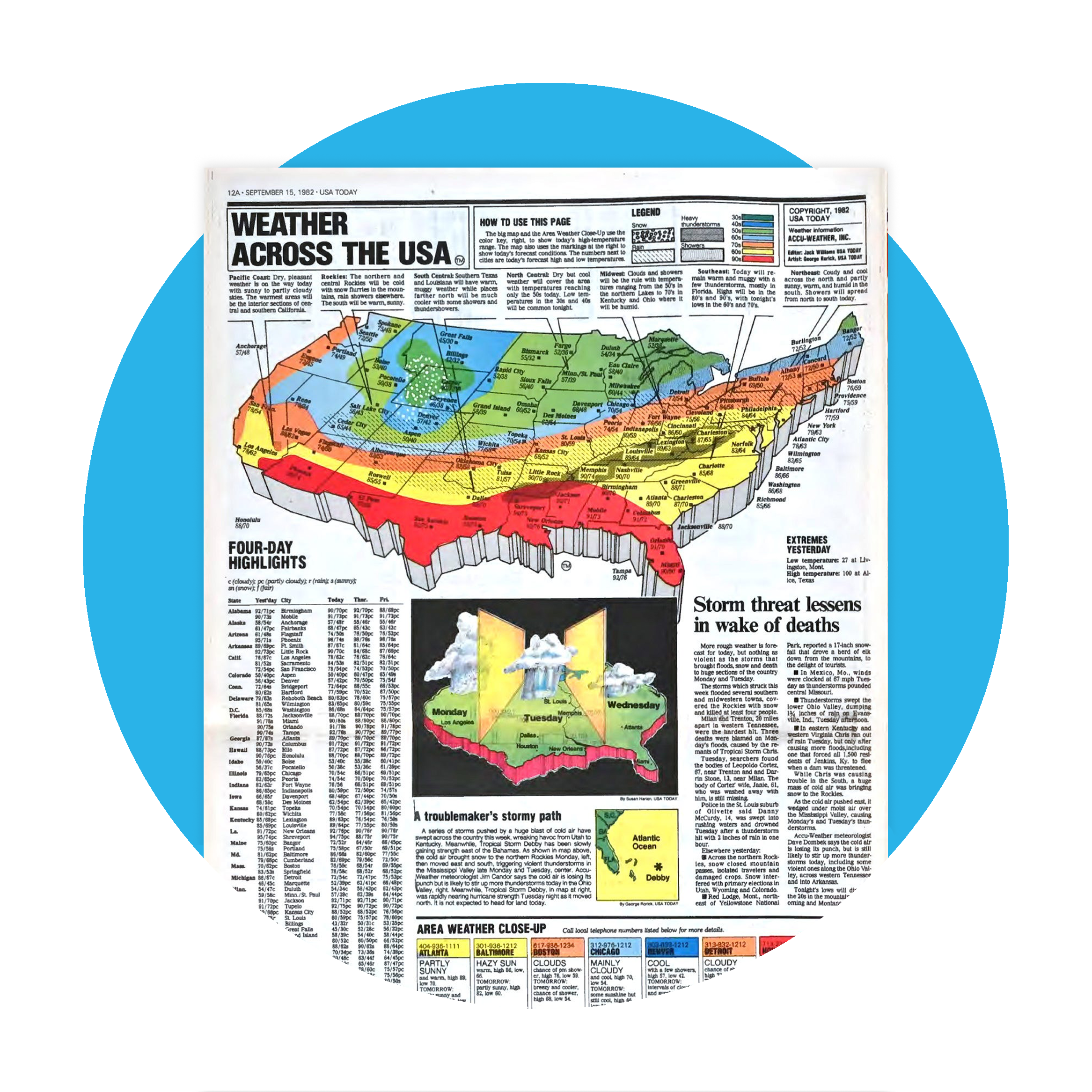
“It’s amazing how many color weather pages debuted in newspapers in late ’82 and ’83,” joked Richard Curtis, USA TODAY’s longtime design chief. “It was about the most groundbreaking thing about USA TODAY.” In a survey, Curtis said, “the Weather Page came out as the second most-looked-at page after Page One.”
To avoid others copying the map, the page’s award-winning designer, George Rorick, used an old cartographer’s trick and added four intentional errors to the map – an inlet here, a bump in a boundary there – as an “aha!” if another newspaper tried to lift the map whole.
And in a tribute to USA TODAY’s founder, Al Neuharth, his birthplace in the tiny South Dakota town of Eureka (pop. 992), was added later to fill a blank area on the map. It’s no longer there, but civic groups and radio stations lobbying for their own towns often questioned Eureka’s inclusion. Our only answer: It’s good to be the boss.

1984: USA TODAY claims Olympics as its own
The 1984 Summer Olympics were planned for Los Angeles, seemingly a Perfect 10 for the young USA TODAY. But the tradition-bound Olympics Committee granted the paper only two photo credentials to cover the event. By 1996, all that changed. USA TODAY staffers entered Atlanta with 120 credentials, so many that other outlets complained.
And a reporting army was formed. Unlike other news organizations, USA TODAY covered every event, printed a daily special section for the full two weeks, and continually updated its website. And the coverage was, yes, USA-centric. “We don’t have a local team,” said then-Sports Managing Editor Monte Lorell. “Team USA – that’s our home team.”

USA TODAY reporters, photographers, graphic artists and videographers have chronicled every pole vault and slalom, from stars (gymnasts Mary Lou Retton in 1984 and the reluctant Simone Biles in 2021, at games delayed by COVID-19) to miracles (USA hockey in 1980), tragedies (the Atlanta bombing in 1996) and scandals (Tonya Harding’s ex-husband attacking the knee of rival Nancy Kerrigan in 1994).
From a production standpoint, the Olympics allowed USA TODAY to experiment with Saturday editions and fast turnarounds. In 1996, vendors handed out copies of the paper with a photo from the closing ceremony as people left the stadium. “It was a great competitive edge,” Lorell said. “Atlanta sort of stamped us as the Olympic newspaper.”

1985: Martzke media column ruffles feathers
From the start, Rudy Martzke’s edgy look at how TV covered sports every weekend became a must-read column – at least among network sports executives – every Monday morning.
By 1985, Martzke’s column had become white-hot – truthfully, and sometimes ruthlessly, critiquing sports announcers from the previous weekend, making stars and sometimes enemies along the way (his feud with Howard Cosell was legendary). His column was obsessive and relentless, pointing out that a camera at an NFL game missed a crucial replay, or that an announcer said Michigan instead of Michigan State, or that a young announcer named Bob Costas was someone to watch.

No one had paid that kind of attention to what happened in the TV booth before, and his column was scoured by sports executives in New York. His reviews, which could rattle careers, drew complaints, including yelps from Pat Summerall, Chris Berman, Joe Garagiola and, of course, Cosell, who after reading criticism of ABC’s Kentucky Derby broadcast sent word that Martzke “knew nothing about television.”

1986: The Challenger explodes
Every generation has a moment of unforgettable tragedy. The assassination of John F. Kennedy. 9/11. School shootings. But for many in 1986, it was the explosion of the space shuttle Challenger, shown live on TV as millions, many of them schoolchildren, watched. Teacher Christa McAuliffe was among the seven crew members aboard. “This will be called the Ultimate Field Trip,” McAuliffe, 37, said before the flight, which ended only 73 seconds after takeoff.

“Oh my God, no!” said first lady Nancy Reagan. Her words became USA TODAY’s Page One headline, in thick black letters against an unprecedented full-page graphic that shows the explosion, the engines, where the crew was sitting, and, almost unbearably, a photo of McAuliffe’s parents looking hopelessly to the sky.
The decision to give the entire front page to the tragedy and more than nine pages inside was an easy one. Neuharth, who rarely attended news meetings, ran the afternoon discussion. It was also decided to provide a sidebar on how to explain to children what happened. The story by health writers Nanci Hellmich and Karen S. Peterson – “Parents urged to discuss tragedy” – was a sad but needed example of looking out for readers after the unthinkable.

1987: Market meltdown
With the Dow Jones Industrial Average comfortably over 30,000 these days, a drop of 508 points would cause hardly a stir. But on Oct. 19, 1987, it was enough to send the Dow tumbling 22% to 1,731, the steepest decline since Black Monday sparked the Great Depression in 1929.
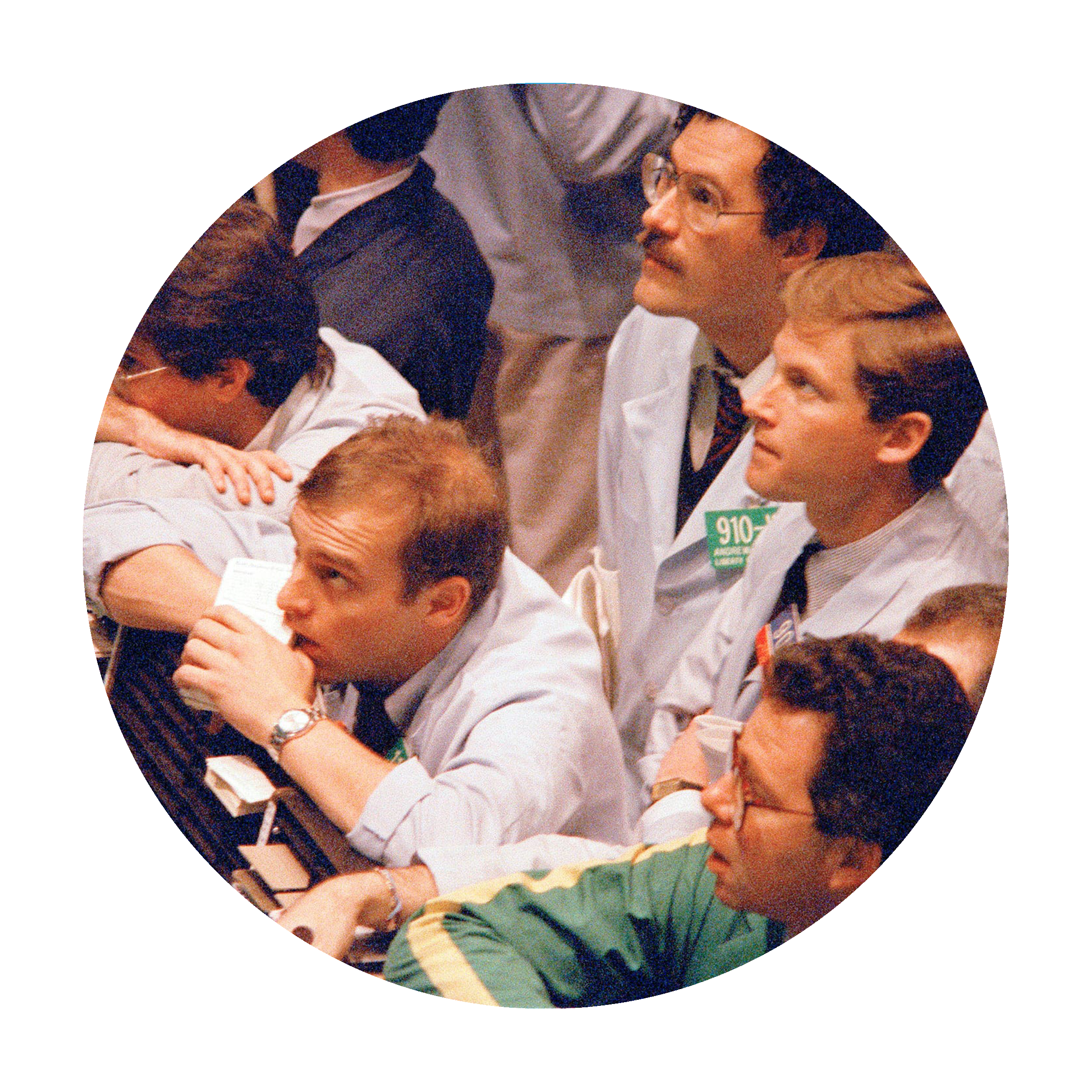
“A worldwide financial panic. People are scared to death,” one financial analyst said. “Very very frightening,” said another. In her story for USA TODAY, former New York bureau chief Susan Antilla wrote that “hard-nosed Wall Street professionals could not hide their cracking voices – a few veterans even broke down and cried during phone calls.”
In typical USA TODAY fashion, the Money section focused on the impact on average investors – “Main Street fidgets as Wall Street burns,” said one headline – and on what’s next. The Money section innovated with new stock market analytical tools and later with an Internet Index of top tech stocks.

1988: USA TODAY tries TV
By 1988, USA TODAY had become a household name, so it was only natural to make a move into television, joining other media disruptors like CNN, ESPN, Entertainment Tonight, C-SPAN and MTV. The 30-minute syndicated show "USA TODAY: The Television Show" tried to replicate the newspaper – four anchors for News, Money, Sports and Life, each walking on a giant map of the USA to introduce stories mostly from the heartland.

Despite top talent, the program never connected. In the nation’s biggest market, New York City, the show aired at 5:30 a.m., which did not help. Renamed "USA on TV," the show was canceled in early 1990.
Nonetheless, what were seen as weaknesses – a softer tone and a people-first approach – are now widely embraced by network morning shows and afternoon talk fests. “The show created a new, faster, zippier, more accessible form of storytelling,” said writer Phil Lerman, who moved from the newspaper to the show. “It was probably the best news show that nobody saw."

1989: Super Bowl Ad Meter
One of USA TODAY's most lasting contributions to TV sports, Madison Avenue (and American culture as we know it) was the realization that Super Bowl ads were as big a part of the event as the game itself. Readers, morning talk shows and ad agencies embraced the USA TODAY Ad Meter from the start.
It was a simple concept: Using techniques developed during presidential campaign coverage, a focus group rated every ad. The result was the first USA TODAY Ad Meter on Monday, Jan. 23, 1989, after Super Bowl XXIII (You remember that one: The 49ers beat the Bengals 20-16; but more notably, the first winning ad was from American Express, featuring Dana Carvey and Jon Lovitz).
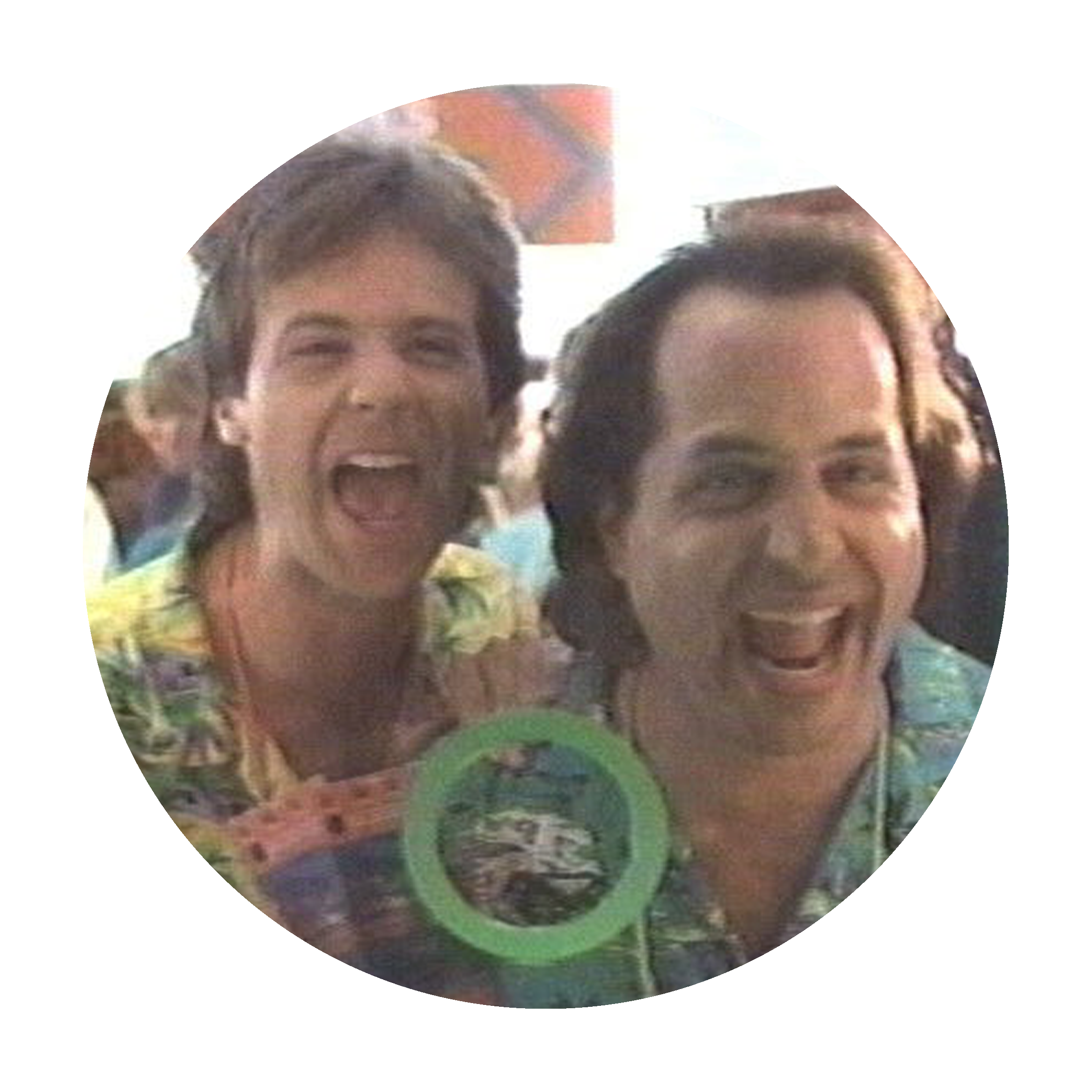
"They were into both the game and the ads,'' recalled former Ad Meter editor Fred Meier, who helped lead the audience participation project. "We could tell from the crowd reaction how high an ad was going to score.”
As the ads grew more expensive (a 30-second Super Bowl spot cost $324,000 in 1982, $6.5 million this year), so did the Ad Meter's influence. In an attempt to make the Ad Meter more of a shared national experience, the Ad Meter is now online, with everyone given the chance to rate the ads from the comfort of their homes. Rocket Home Mortgages got the most votes in the 32nd Ad Meter last February.

1989: The Berlin Wall is gone
The fall of Soviet-style communism shocked the world when citizens of Berlin dismantled the wall that had split East and West since 1961. Amid it all was USA TODAY reporter Juan J. Walte, who excitedly called into USA TODAY from Berlin on a Thursday night to describe the scene to editors, some of them skeptical that East German soldiers were letting it happen. But Walte’s Page One stories captured the history and the raw emotions of the night.

“I was there at Checkpoint Charlie just before midnight when it all happened.” Walte recalled years later. “When midnight came, the people on the Western side shouted at the (East German guards) to lift the barriers. The guards eventually gave up, threw their hats into the air and lifted the barriers. That was it!
“This is the kind of story reporters dream about,” said Walte, who died in 2019. “To be at the right place at the right time – covering the biggest news story in the world.”

1989: A jailhouse talk with the Godfather of Soul
USA TODAY’s Life Department routinely landed top interviews with celebrities – from Paul Newman to Oprah Winfrey – but few were as unusual as the time reporter Kitty Bean Yancey spent with soul superstar James Brown in a South Carolina prison. Brown, then 55, was serving six years (he was released after two) for a bizarre police chase.

After a co-worker connected with Brown’s wife, Yancey met up with Brown at South Carolina’s State Park Correctional Center, a minimum security prison. Brown’s wife, Adrienne, “brought him out to me on the recreation field, where she and James were allowed alone time. I did the interview in the back of his black Cadillac,” Yancey remembers.
“When time was up, he posed for a quick photo, insisting on flashing the peace sign because ‘I know you folks at USA TODAY. You like people holding their fingers up.’"
Brown, released in 1990, died in 2006.
1990s

1990: USA TODAY goes to war
USA TODAY came of age after Saddam Hussein’s Iraq invaded its oil-rich neighbor Kuwait in August 1990. Tensions grew for months as the U.S. prepared to go to war. The USA TODAY newsroom planned with it – a dozen reporters headed for the Mideast and Persian Gulf.
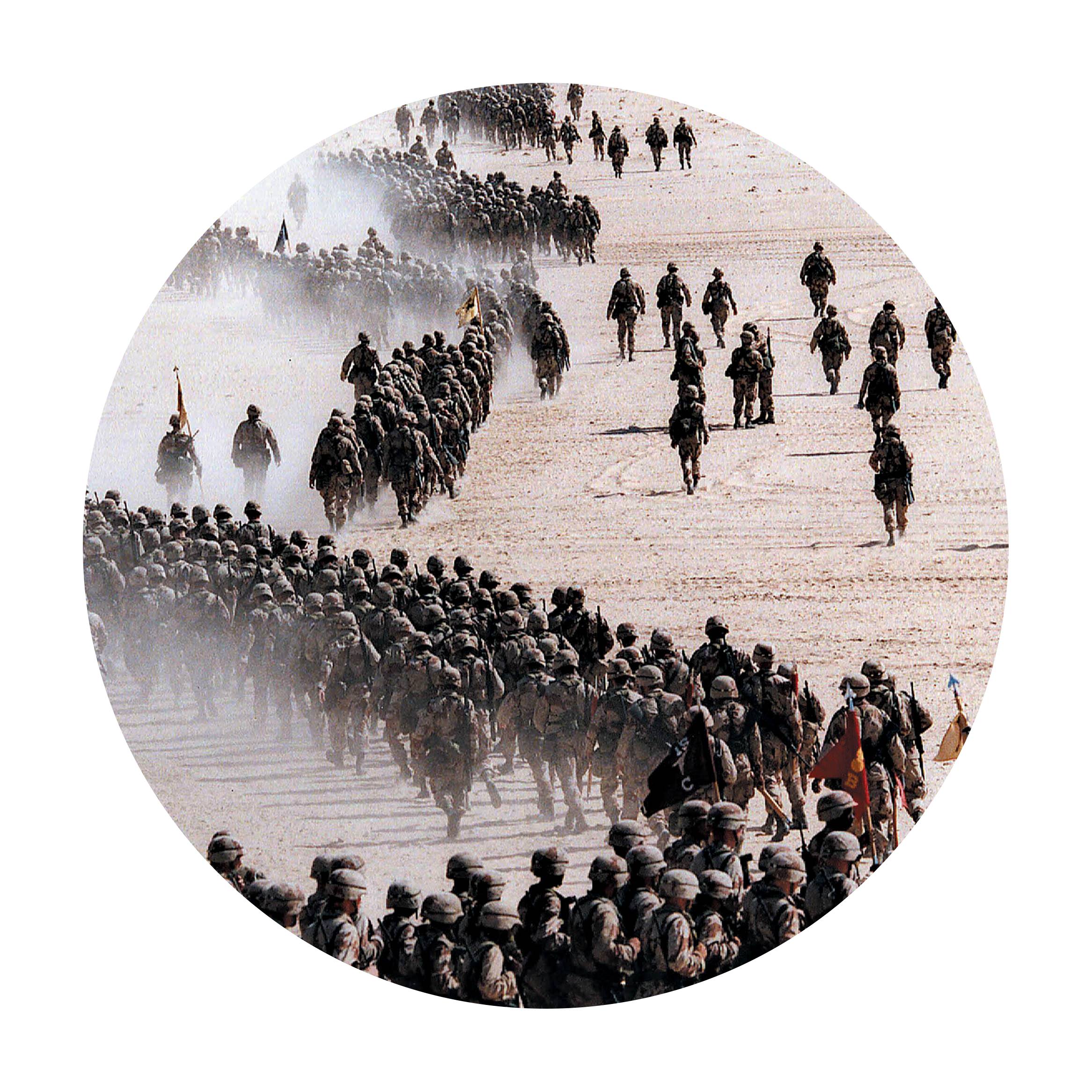
Reporter Deborah Howlett spent two weeks at the border of Turkey covering the plight of Kurdish refugees. She remembers a mother quietly rocking back and forth, holding her dead infant. “I spent so many of my days talking to soldiers,’’ recalled reporter Judy Keen of a two-month stint in Saudi Arabia, missiles often soaring overhead. “I met macho warriors, frightened kids, steely veterans, bored observers. Each time I looked into their eyes I saw the eyes of someone I loved long ago.”
By the time Iraq withdrew, USA TODAY had printed 38 cover stories in a row, along with state-of-the-art graphics and photography. “It was definitely a turning point in the acceptance of USA TODAY as a serious force in the nation’s media,” said then Editor-in-Chief Peter Prichard.

1991: Baseball Weekly launched
From the start, USA TODAY was intent on giving readers the most complete statistics for every team in every league in every time zone. USA TODAY came up with the “last 10 games” and “streaks” information in baseball standings, and it pioneered statistics now commonplace in sports betting and settling arguments at bars.
“Before USA TODAY came along, sports statistics were often days old,” said Henry Freeman, founding editor of the Sports Department. The blizzard of data “changed sports sections, triggering an explosion in statistical information.”

The next step was the debut of Baseball Weekly in 1991, a tabloid that added minor leagues, college and high school. There wasn’t enough advertising in the baseball offseason, former publisher Lee Ivory explained, so football was added and the name changed to USA TODAY Sports Weekly in 2002.
The tabloid format became a template for USA TODAY Special Editions on everything from the death of Princess Diana to motor sports.

1992: Arthur Ashe has AIDS
In 1992, USA TODAY learned that tennis star Arthur Ashe had AIDS. The disease then was thought to be always fatal, and editors debated what to do. Ashe, in conversation with USA TODAY, said he preferred to keep his condition private. Gene Policinski, then the Sports editor, said that the story was significant but that USA TODAY was not ready to publish. He offered Ashe time to decide what to do.

Ashe decided to go public. "I am sorry that I have been forced to make this revelation now," Ashe said at a news conference. "I didn't commit any crime. I am not running for public office. I should reserve the right to keep something like that private."
Ashe died in 1993, but the story raised new questions about privacy, especially in today’s media-saturated world. “An intrusion into the private life of Arthur Ashe,’’ wrote Chicago Tribune columnist Ronald J, Kallen. “Predatory journalism, pure and simple.”
“It was news then and would be news now,” said Policinski, now a senior fellow at the Freedom Forum. ”Even Arthur Ashe thought so, He said later his issue was with the person who told us the news, not with USA TODAY’s response.”

1993: Guns in America
On Dec. 7, 1993, a gunman opened fire with a semi-automatic pistol on a crowded Long Island Railroad commuter train in Queens, N.Y. Six people were killed, 19 wounded. Even though mass shootings were nothing like today – “only” 63 people killed in mass shootings in 1993 compared with 506 so far this year – homicides were skyrocketing, setting a record at 12,489 in 1993. Semi-automatic weapons were not yet a major factor.
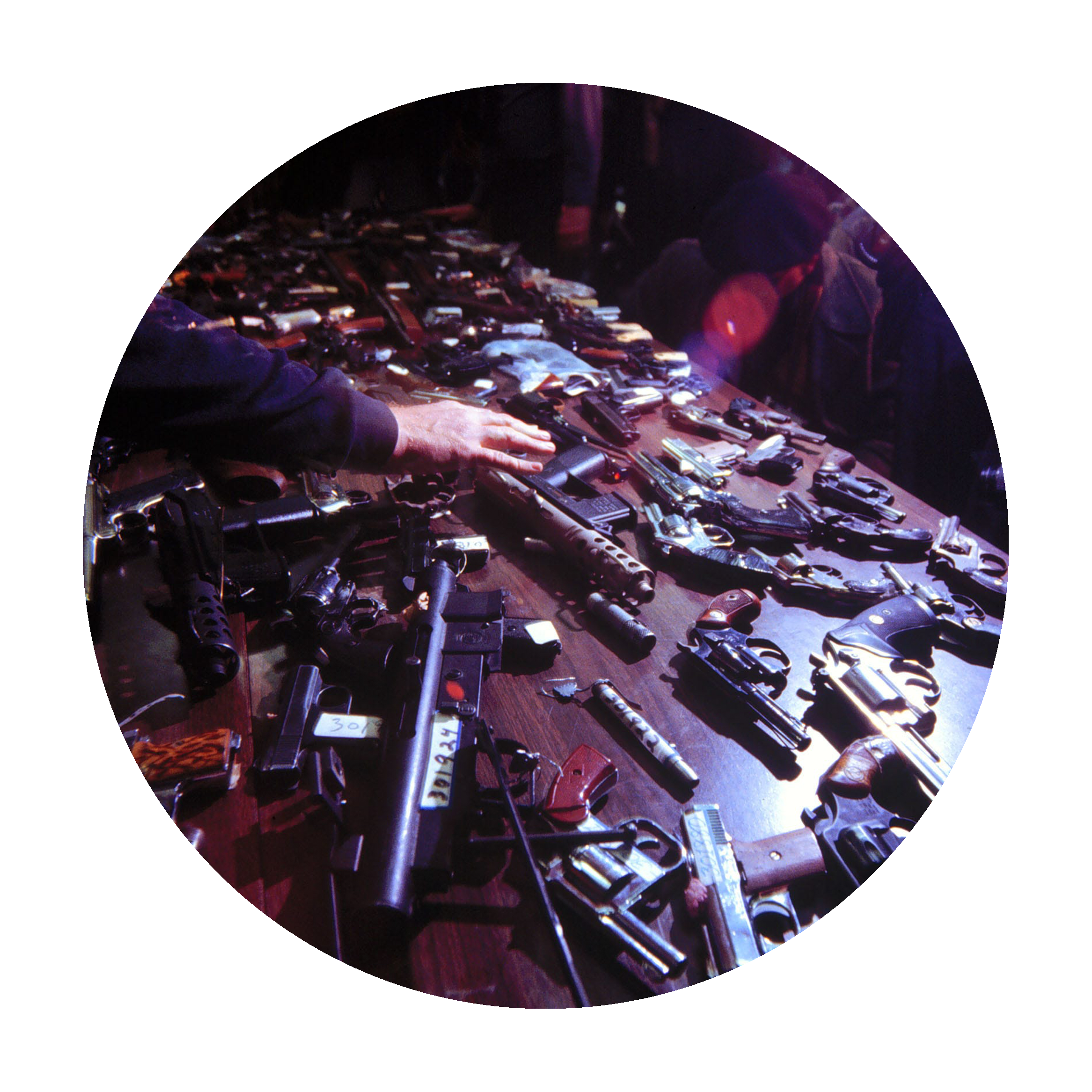
Amid the holiday season, 60 staffers in all four sections produced an 18-page report. A “barrage of statistics,” The Associated Press wrote, noting that both sides of the gun debate were presented. Coverage included a look at the business of guns in the Money section; Sports talked to worried coaches, while hunters feared they will “pay the price for criminals”; Life rounded up celebrity reactions and visited a trauma center.
Of the top 10 guns in America shown on a full page, only one – the Intratec TEC-DC9 – had a magazine of more than 10 shots (32). The others were basic handguns.

1993: USA TODAY Best-Selling Books list debuts
One of USA TODAY’s core values is a spirit of reinvention, and there are few better examples than the USA TODAY Best-Selling Books list that made its debut in October 1993.
Unlike other well-known bestseller lists, which exclude certain categories or genres, the USA TODAY Best-Selling Books list covers all genres and does not divide books into categories. It also is based on actual sales booksellers across the USA (not a select few sources as used by other lists), and it was among the first to include digital book sales from a variety of platforms.

“One of the top achievements for an author is hitting the USA TODAY best-seller list,” said an article at Forbes in 2020. “It’s considered such a noteworthy accomplishment because it ranks best-selling books based on sales, not editorial preferences, and only 150 top-selling books are featured every week, among millions of books available for purchase.”

1995: USA TODAY Online begins with Oklahoma City bombing
USA TODAY Online, a bet on the newspaper’s digital future, launched quietly on April 15, 1995, promising “Your News. When You Want It.” Just two days later, the fledgling website was faced with one of the biggest stories of the decade: a domestic terror bombing in Oklahoma City that killed 168 people, including children.

“Terror strikes in heartland,” declared a large black headline on the homepage. The site was so new that several of the links on the page were either blank or not yet functional. But the website’s coverage that day at USATODAY.com, combining USA TODAY reporting, graphics and, most importantly, constant updates, demonstrated the future of news. Print would have to provide something more to compete the next morning.
The website began with a core group of just six people, but after several months it was attracting a half-million pageviews a day. It is now routinely among the nation’s top news sites.

1996: Why black churches were burning
USA TODAY’s yearlong investigation into an epidemic of arsons at Black churches in the South found a situation far more complex than expected.
Reporters Gary Fields, Richard Price and colleagues examined 64 confirmed or suspected church arsons, including interviews with 500 people. The surprising findings: Only four could be proven to be racially motivated; mental illness and vulnerability of buildings was a more common factor.
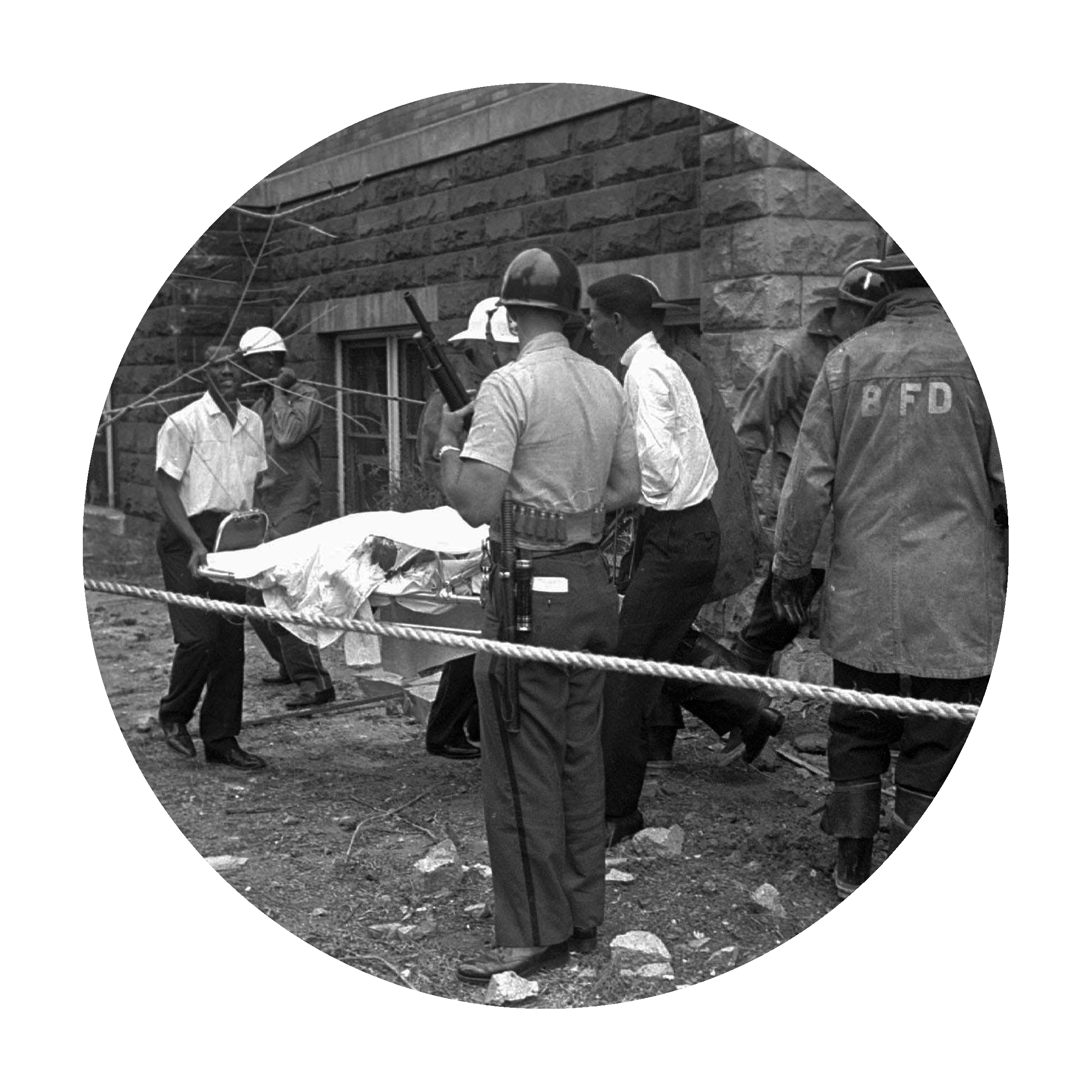
“Churches of every color are a traditional favorite of arsonists,’’ the series concluded. “Although the pace has been declining, arsonists still torch an average of 520 churches and church-owned buildings a year."
After the series, recalled reporter Fields, now at The Associated Press, “laws changed, churches were rebuilt and a new investigative apparatus was created. I also learned vividly, whenever possible, do your own research. When we did, the story expanded and got more complicated.”

1996: Danger of air bags brings changes
In a series of stories beginning in 1996, reporters Jayne O’Donnell and Jim Healey revealed the deadly dangers that air bags posed to children in the passenger seats of cars. The explosive force of the air bag led to more than 20 deaths of infants and young children in the front seat through July of 1996, even when buckled in, USA TODAY revealed.

The prizewinning story was cited in federal studies, sparked formation of an advocacy group of parents, and is credited with helping lead to a federal requirement in 1999 that all new vehicles have air bag warning labels on sun visors. “I use the air bag stories all the time as an example of how big an effect reporters can have on policy,” O’Donnell says. “Everyone we knew was still putting their children in the passenger seat in front of these ‘deadly air bags,’ as the headline called them.
“Shortly after the first big story ran, the parents and grandparents of the children killed by air bags presented me with 26 long-stemmed roses – one for each of the dead children.”

1998: Opinions from all sides
USA TODAY’s Opinion Page has always included Opposing Views to editorial opinions. That way, readers get the full spectrum of thinking on a subject. The overriding goal is stated in Al Neuharth’s motto: “USA TODAY hopes to serve as a forum for better understanding and unity to make the USA truly one nation.”

Although USA TODAY had never editorially endorsed a candidate, the Editorial Board in 1998 joined 100 other newspapers in calling for President Bill Clinton to resign over the Monica Lewinsky affair. The opposing view was from former Sen. George Mitchell, who wrote that Clinton’s resignation would “reverse the will of the people.”
Then in 2016, USA TODAY did not endorse Hillary Clinton but declared Donald Trump “unfit” for the presidency. The opposing view this time was from Trump’s running mate, Mike Pence, who said Trump was “ready to lead.” Former reporter Richard Benedetto called the Trump anti-endorsement “a rejection of bedrock principles.” USA TODAY printed that, too.

1998: Saving our shows
Before today’s explosion of online streaming, the four major networks cherry-picked a handful of shows for renewal each season. Many fans were left brokenhearted that their favorite shows were canceled.
In 1998, USA TODAY’s Save Our Shows survey asked readers to choose among two dozen series that might be canceled. Over 25 years, SOS has helped keep series like “Timeless” and “Zoey’s Extraordinary Playlist” alive for at least an extra season, sometimes more. This year’s survey found almost half of 70,000 voters wanted the reboot of the venerable “Magnum P.I.” to return, and a third picked ABC’s soapy drama “A Million Little Things.” Both did get new seasons, although NBC picked up “Magnum” after CBS canceled it.

There’s no doubt network executives rely primarily on ratings, demographics, advertising support and programming costs, but USA TODAY’s Save Our Shows has become an added and fun bit of input as well.

1998: Supreme Court clerks lack diversity
USA TODAY reporter Tony Mauro’s career covering the Supreme Court gave him a unique perspective on the institution. In 1998, he used that expertise to reveal a startling lack of diversity among Supreme Court law clerks.
Law clerks help research and shape court opinions and often move on to distinguished careers. But few were women or minorities. To dig deeper, Mauro explored the demographics of all 394 law clerks who had served under the nine justices. “It was not easy,” Mauro remembered. “There were some I called who objected to the whole endeavor.”

The results were sobering: Less than 2% of law clerks were Black; even fewer were Hispanic; and 5% were Asian-American. About one-fourth were women. “Even though more than 40% of law school graduates now are women and nearly 20% are minorities,” Mauro wrote, “they largely have been bypassed. As a result, law clerks’ powerful dual jobs of screening cases and drafting opinions – which often have dramatic effect on race and gender relations, among many other issues – remain mostly in the hands of white men.”
2000s

2000: The election night that wouldn’t end
Presidential election nights are always exciting, and sometimes close. But nothing could compare to the flip-flopping results on Nov. 7, 2000. Vice President Al Gore was in a tight race against Texas Gov. George W. Bush. To be ready with a Page One cover story, even if results were not known, Washington Bureau Chief Susan Page used exit polls to list Six Lessons from the election, things like top issues, demographics, turnout. All without suggesting a winner.

As the night wore on, Gore was being projected by some as the winner; then it looked as if Bush would win. As deadlines came and went, Page’s Six Lessons became seven, and then, by the end of the night, eight. Through five print editions, Page rewrote and rewrote again. “Bush appears ahead as Florida holds the key,” was the final headline. Which was ultimately accurate when the Supreme Court decided for Bush.
“By the final edition, we had EIGHT LESSONS,” Page remembers. “What we didn’t have – and wouldn’t have for another 36 days – was the biggest lesson of all: Who won?”

2000: NFL injuries run deep
For players in the NFL, Monday mornings are the worst. So wrote award-winning sports reporter Jarrett Bell in 2000, describing the week of pain after every game in the NFL. Long before the focus on concussion protocols and rules to protect players, Bell’s story showed just how much agony there is after an average Sunday contest.
”My shoulders feel like they’re on fire,’’ says Pittsburgh Steelers star running back Jerome Bettis on a typical Monday morning. He can barely move his back, and “one of his ankles is purple and swollen,” writes Bell, granted rare access to Bettis. ”His left hip still hurts. His ribs sting at even the slightest touch."
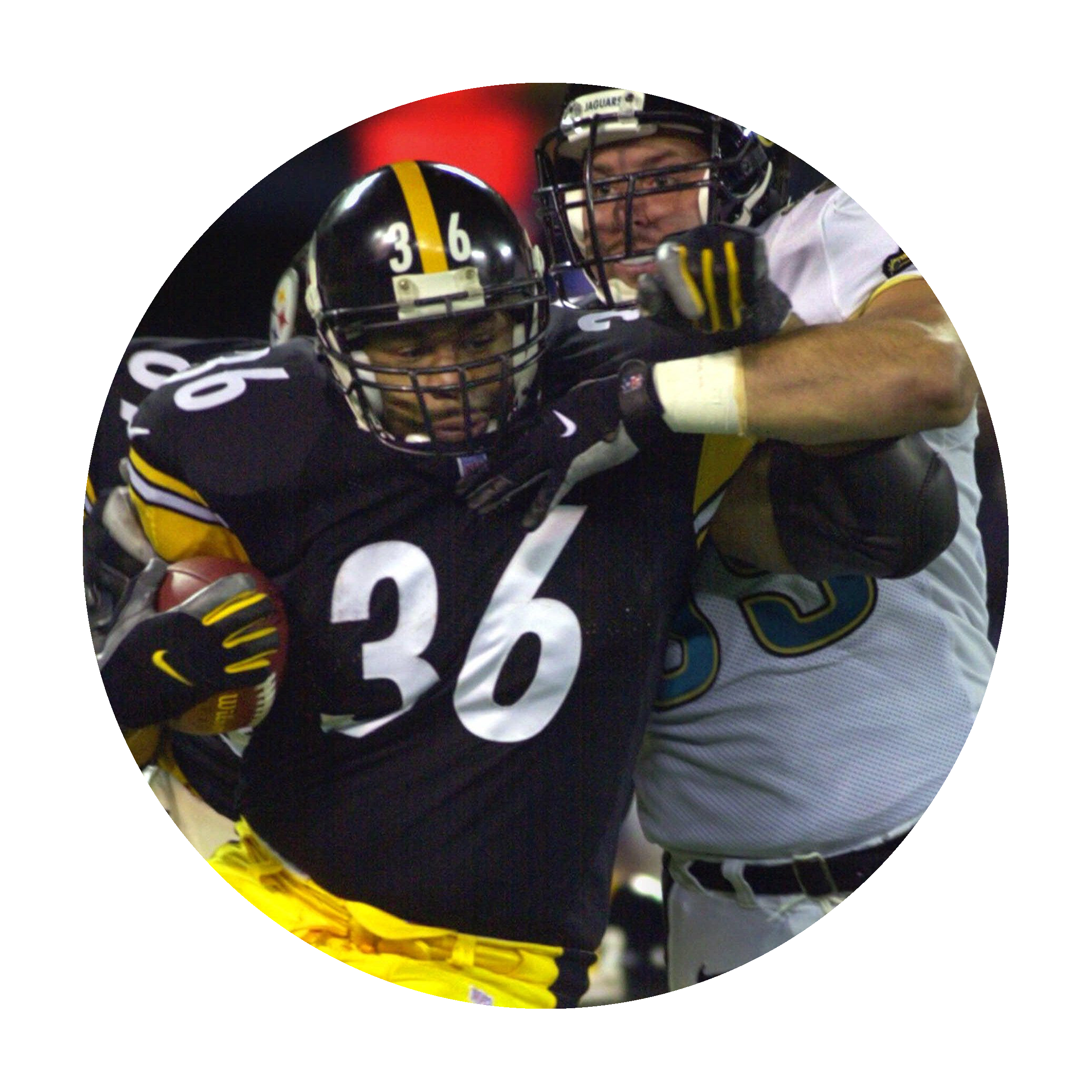
Bell followed Bettis into places few reporters ever see – the training rooms, the daily ice baths, the rehabs. It’s a rough game, and USA TODAY readers got a rare glimpse. “His mother suggested it to me,” Bell said. “She said, 'You should do a story on how much these guys get beat up.' It did strike a nerve with a lot of people.”

2001: Terror changes everything
Nothing was the same after 9/11. USA TODAY reporters were in Manhattan when the twin towers were struck; editors coming to work in Virginia clearly saw the American Airlines plane smash into the Pentagon, which billowed smoke outside the newsroom windows; White House reporter Judy Keen was aboard Air Force One as it bounced around the U.S., escorted by fighter jets.

Much of the year was spent tallying the damage, the victims, the terrorists. On the first anniversary, three USA TODAY reporters (Alan Levin, Marilyn Adams and Blake Morrison) described in startling detail how air controllers had landed 4,500 flights in just four hours on that harrowing September morning.
In a suburban Virginia control center, with 4,360 planes still in the sky, someone said loudly, “Just stop everything! Just stop it!” At United headquarters in Illinois, the order goes out: “Tell them to get to the nearest airport they can.”
By noon, only 669 planes were still in the air. And the world was forever changed.

2002: Women at Augusta
In 2002, women were still not allowed to be members of the Augusta National Golf Club, which hosts the Masters every year. But pressure was building. USA TODAY’s sports columnist Christine Brennan, in her fourth column about Augusta’s male-only preserve, complained that she was “beating my head against the wall about the issue.”
At the same time, USA TODAY’s Michael McCarthy and Erik Brady got hold of Augusta’s private membership list: all men, average age 72, most of them from old-school American industries and finance. Augusta’s response about the ban on women? We’re a “private club.”
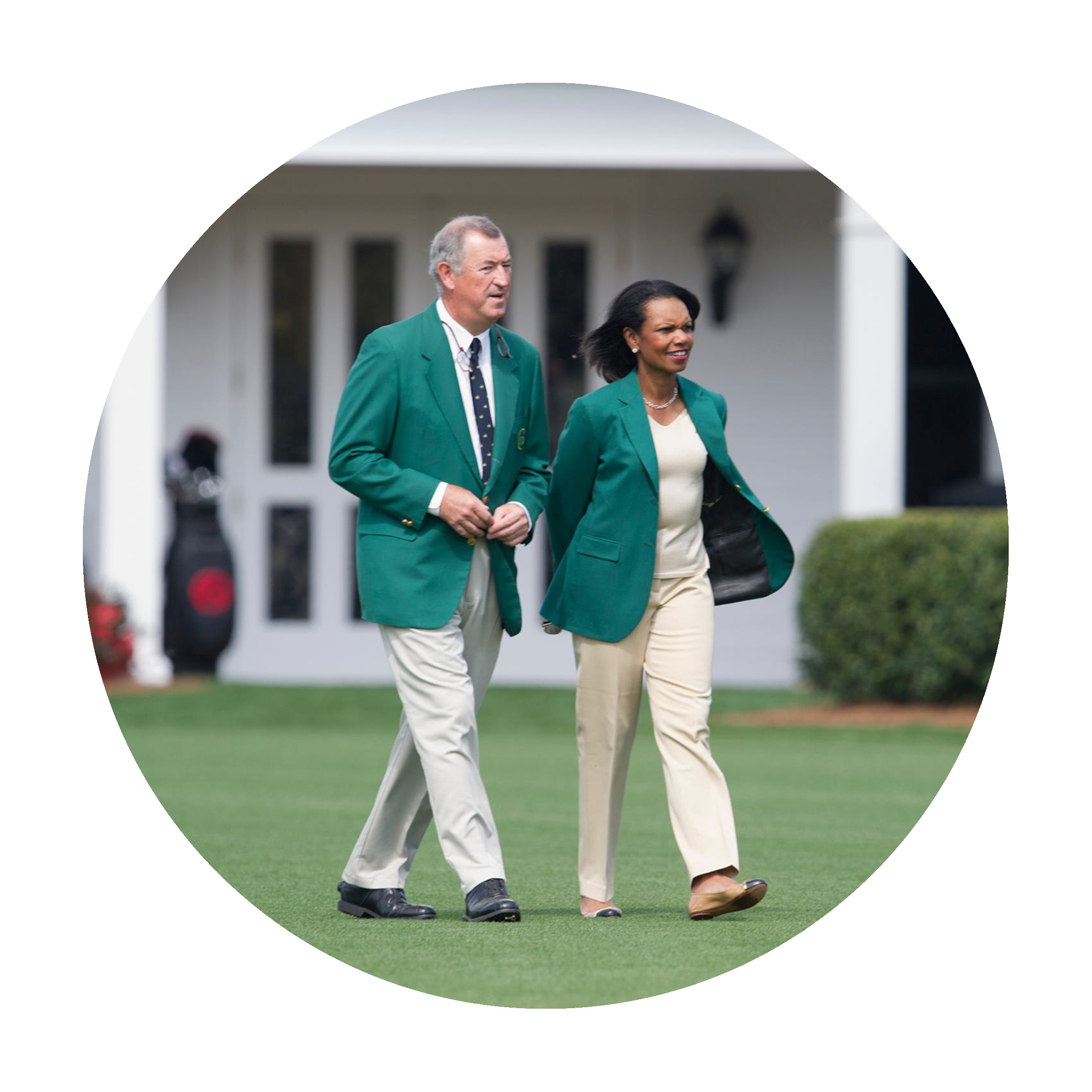
By August, the heat was so much that the Masters Tournament and CBS had no TV advertising as corporate America shied away. It was not until 2012 that Augusta blinked, allowing former Secretary of State Condoleezza Rice and financier Donna Moore to join. “Finally happened today,” Brennan deadpanned in a tweet.
As a coda, Brennan became a "Jeopardy!" question in 2022: “Stories by USA TODAY's Christine Brennan helped get this golf club to admit its first female members in 2012.”

2002: Travel coverage takes off
From the start, travelers were accustomed to finding USA TODAY outside their hotel rooms, and indeed, that circulation was critical to the newspaper’s early success. So there was no mystery that USA TODAY placed a special emphasis on travel coverage.
But it was travel coverage with a difference, with a focus on survival tips and real time solutions rather than the travelogue approach used by others. In 2002, writer Ben Mutzabaugh started Today in the Sky, a daily column devoted to air travel from business and leisure passengers’ points of view. Gene Sloan went just as in-depth about cruises, this time with the vacationer experience in mind.
And the Money Department inaugurated a Road Warrior panel made up of frequent business travelers who have flown at least 100,000 miles or spent 100 nights at hotels a year. The warriors weighed in on breaking news stories, and offered advice for others.
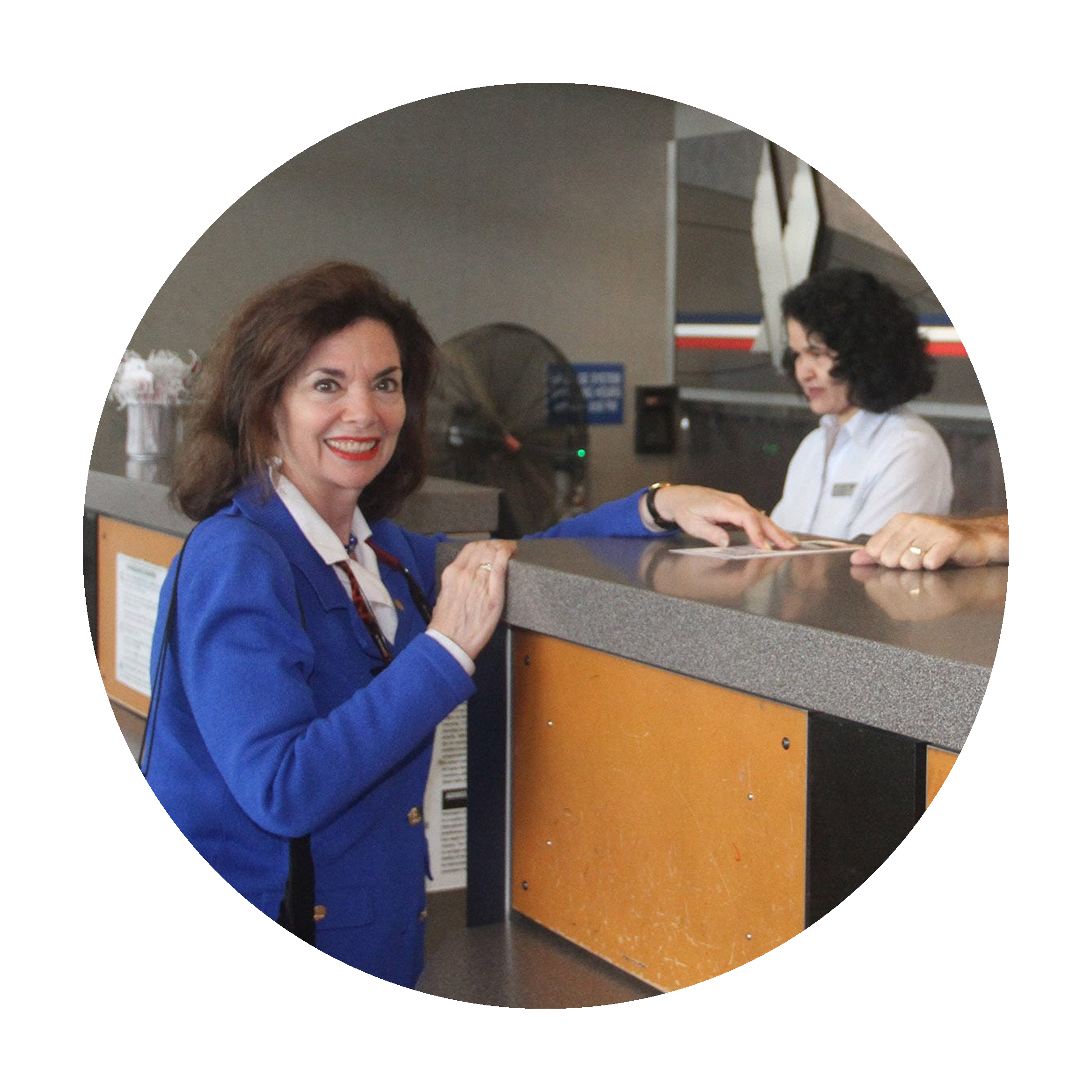
"The ticket counter agent and the gate agents are your friend,” suggested Joyce Gioia, the 2013 Road Warrior of the Year and now a business consultant. “Smile and they will smile back."

2003: Six Minutes to Live or Die
In medical emergencies, slow response times can be a hidden killer. A three-day series in 2003 examined ambulance records across the nation, revealing that 1,000 lives are “needlessly lost each year” because of “inefficiencies” in emergency services. As little as six minutes can make a difference.

“Emergency medical systems in most of the nation's 50 largest cities are fragmented, inconsistent and slow,” the series concluded. In some cases, “turf wars” between ambulance and fire department services can delay speedy responses.
Reporter Bob Davis, himself a former paramedic, said, “Cardiac arrest survival was a matter of geography. Your odds of death were often dramatically higher than on one side of a jurisdictional line than on the other side of the street.” The 18-month investigation is credited with localities changing response procedures. “This series continues to be credited with lives saved,’’ Davis said.

2003: Rumsfeld’s ‘long hard slog’
Predictions about the war on terror had been rosy in the spring of 2003. Vice President Dick Cheney said U.S. and coalition forces would be “greeted like liberators” after the invasion of Iraq.
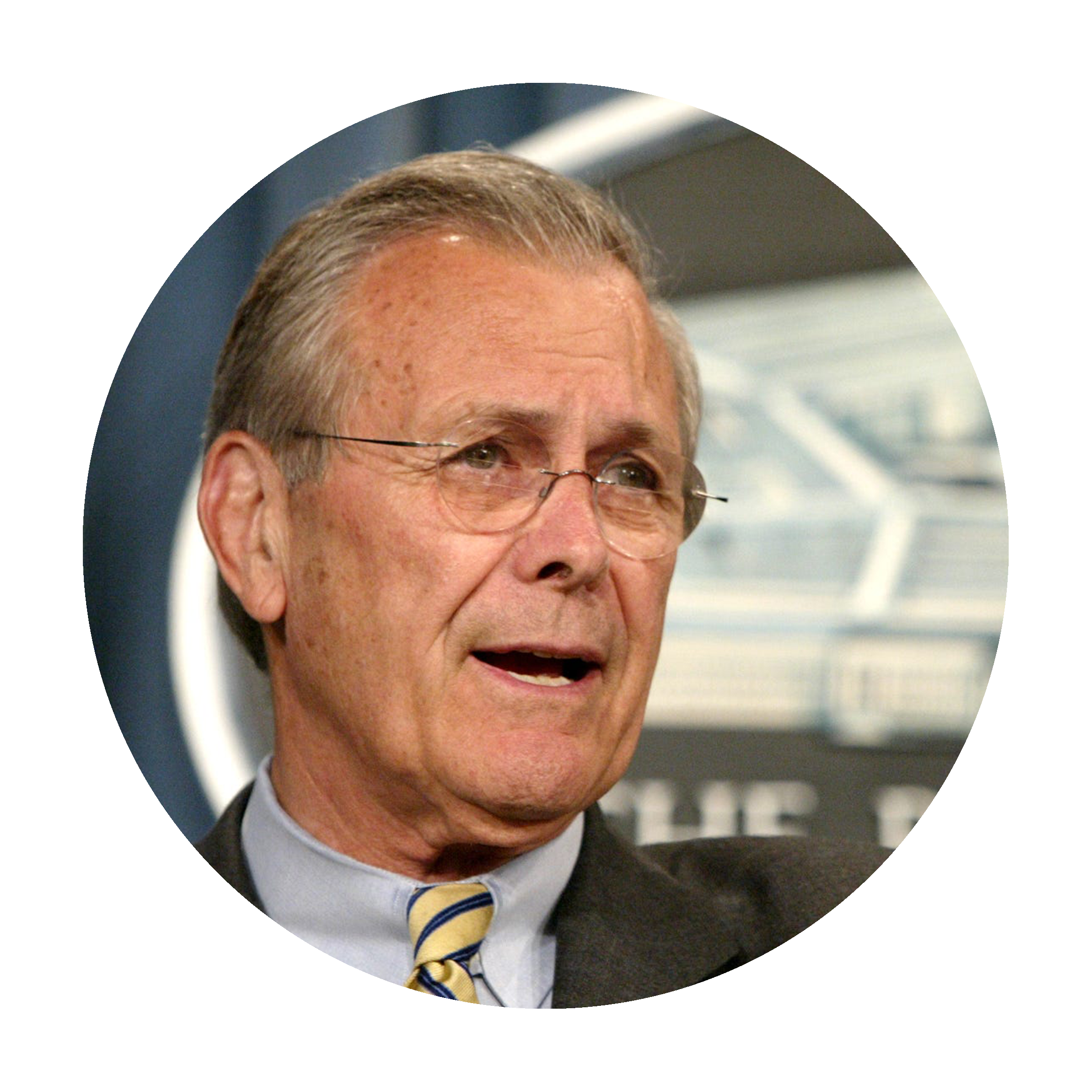
But as that war and efforts to curtail al-Qaida and terror groups slowed, Defense Secretary Donald Rumsfeld said in a Pentagon memo Oct. 16, 2003, that the war would be winnable but a “long hard slog.” Rumsfeld’s memo to top defense officials, obtained exclusively by USA TODAY’s Dave Moniz and Tom Squitieri, wondered whether the U.S. was moving fast enough to infiltrate terror groups, and “is the situation that the faster we work the behinder we get?”
Iraq’s Saddam Hussein was captured in December 2003, but questions raised in the memo remain.

2006: Oscars backstage
For years USA TODAY sought to get backstage access at the Oscars. In 2006 the request was granted, resulting in an exclusive photo by photographer Robert Hanashiro of best actress nominee Reese Witherspoon playfully praying in front of a giant Oscar statue. She ended up winning.
“I literally burst out laughing when I saw the photo,” remembered photo editor Jym Wilson. “After working for a few years to get us backstage, this was the payoff.”

The backstage position paid off again in 2017 when “La La Land” was announced the winner for best picture. Producers were beginning to accept the award when Life editor Kim Willis received a call from reporter Bryan Alexander backstage. “He called me and whispered that “Moonlight” had actually won, and hung up. It was very confusing.”
As was that Oscar night.

2007: Troops in danger
The danger of buried bombs (IEDs, or improvised explosive devices) in Iraq and Afghanistan was well known, but few realized that the vehicles most used by the U.S. Army were especially vulnerable to the bombs and should have been strengthened.
That was the result of years of reporting, dating back to 2007, by USA TODAY Pentagon reporter Tom Vanden Brook and others about ways to protect against IEDs, which had accounted for 80% of U.S. casualties. The stories focused on a different kind of vehicle, MRAPs (Mine Resistant Ambush Protected Vehicles), which studies found were 10 to 14 times more likely to survive blasts from buried explosives than regular Humvees.

The Pentagon, partly spurred by USA TODAY’s reporting, authorized a $40 billion program to switch to the new armored vehicles, which saved thousands of lives, according to then-Defense Secretary Robert Gates, who said he first learned of the safer vehicles in USA TODAY.
Gates, in fact, in his 2014 book, “Duty,” wrote that he “called for a briefing after reading the (USA TODAY) report on April 19, 2007.” Vanden Brook asked in a 2014 column, “How was it that a newspaper reporter, who had been on the Pentagon beat for only a few months, was the one to inform Gates about MRAPs?”

2008: The Credit Trap
Predatory lending. Hidden fees. Secretive credit scores. These and more were part of a series aimed at consumers called “The Credit Trap.” The stories by Kathy Chu won a Polk Award in business reporting and led to congressional and regulatory efforts to reform banking fees.

The investigation found inflated home prices were causing “reckless extension of credit” leading to an explosion of foreclosures. Some banks doubled credit card interest rates even for cardholders who never missed a payment. And fees were increasing for everything from checking to overdrafts.
Much of this contributed to the financial crisis of 2007-2008. What made Chu’s series different was the number of consumer tips and strategies for readers to avoid the financial pitfalls all around them.

2009: King of Pop dies
It was a quiet Thursday afternoon in 2009 when word came that Michael Jackson, the biggest pop star in the world, had died. USA TODAY immediately started posting a cascade of updates and shocked reactions from celebrities and fans, along with an interactive timeline. Steve Jones, one of the Life Department’s top music writers, banged out a lengthy and smart appreciation,

Jones, who died in 2013, began his story with a look back to “a magical night in 1983” when Jackson’s moonwalk during “Billie Jean” was seen on TV by 47 million people, “riding a wave of popularity rarely seen anywhere.”
Staffers worked all weekend to put out a 48-page tabloid and a glossy collectible magazine. “Probably no celebrity has been as revered and reviled,” Jones wrote.
2010s

2011: State pension abuses
Should elected officials get state pensions worth three times or more their annual salary? In a series of articles in 2011, reporter Tom Frank revealed that more than 4,100 legislators in 33 states were eligible to use obscure special retirement laws to boost their pensions by up to $100,000 a year. One legislator in South Carolina began receiving triple his annual salary after serving 30 years – without actually retiring.
Regular state workers – from janitors to top legislative civil servants – do not benefit from such special treatment. “Mind-blowing hypocrisy,’’ said Rep. Steven Webber, D-Mo. “Lawmakers treat themselves differently.”

USA TODAY had to comb through thousands of pages to find how legislative pensions and perks were computed. The investigation was a 2012 Pulitzer Prize finalist.

2012: Ghost Factories
The USA TODAY investigation revealed hidden lead poisoning near schools and other populated areas from hundreds of long-deserted factories. The factories, which were used to smelt lead from the 1930s to 1960s, were abandoned, often without any cleanup or monitoring. Despite warnings from the EPA in 2001, “state and federal regulators largely ignored the danger that left thousands of families in harm’s way, doing little to check out the factory sites or warn area residents,” reporter Alison Young wrote.

The investigation by Young and Peter Eisler included USA TODAY's own on-site soil sampling, 40 open-record requests, 15,000 pages of government records and reviews of maps dating back to the 1800s. As presented, the series featured multimedia maps and videos of 137 contaminated sites.
The project resulted in government evaluations of 464 sites nationwide and actual cleanups in some cases. The stories won 15 journalism prizes, including an award from the National Academies of Science, Engineering, and Medicine, which said the stories “armed reporters and citizens with the knowledge and technology to recognize threats in their own backyards.”

2013: Craig Wilson’s final ‘Final Word’
For more than 16 years, writer Craig Wilson held forth on everything from life as a gay couple in Washington, D.C.’s Georgetown to the adventures of travel and the sadness upon the death of his dog, Murphy.
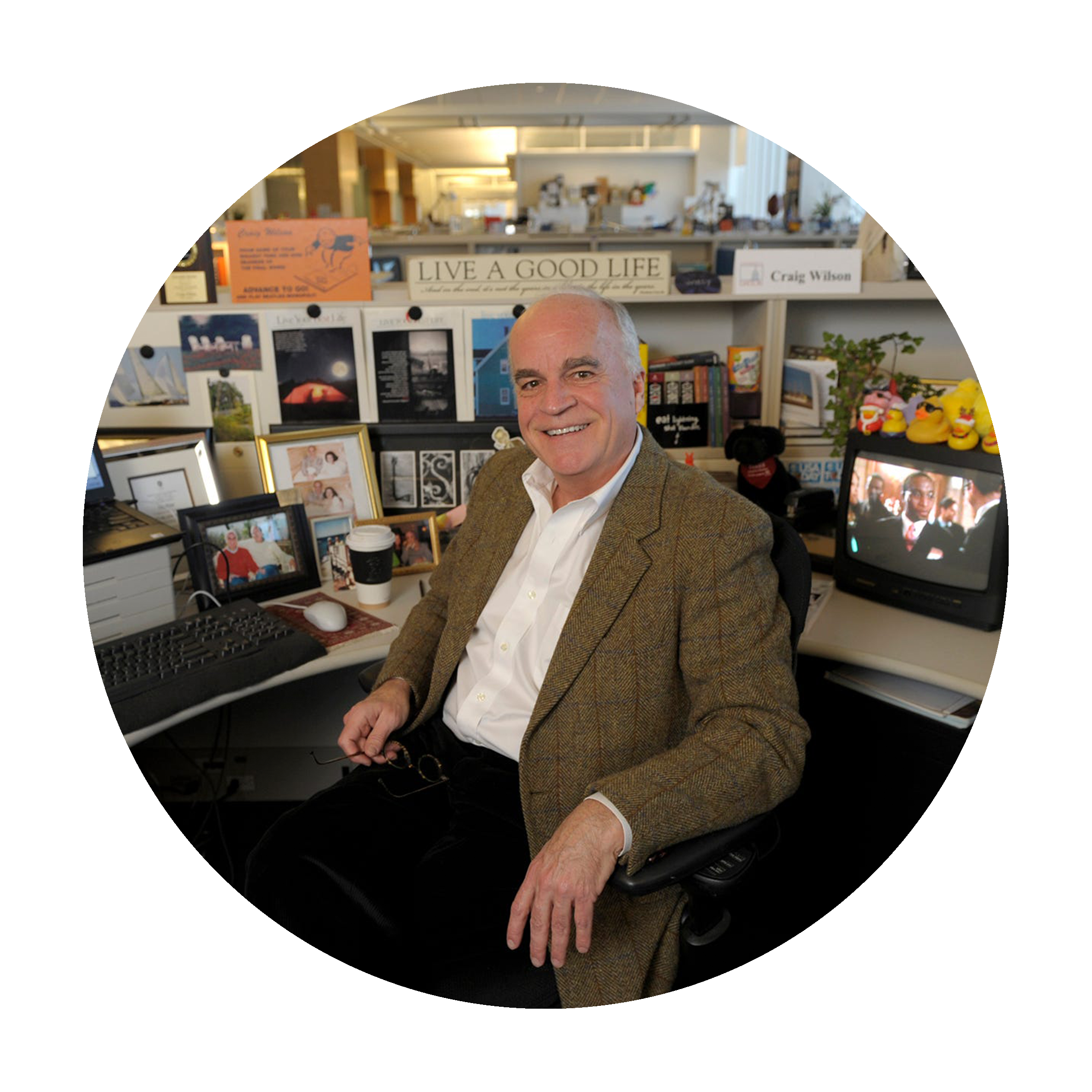
Oprah Winfrey called him on New Year’s Eve one year to praise his column, saying the only resolution anyone needs is to get a dog. “She loved it,” Wilson says. His column, “The Final Word,” was collected into a book in 2002, “The Little Things: An Appreciation of Life’s Simple Pleasures.” Wilson says now, “It wasn't a GAY column but rather a column about how normal gay life can be.”
In his farewell column in 2013, Wilson wrote: “I'll even miss those of you who wrote to tell me you couldn't believe USA TODAY actually paid me to write ‘such drivel.’ … But the column was never political. It was just a slice of life – my love of outdoor showers, a good snowstorm, and screen doors that slam shut on warm summer nights."

2015: USA TODAY Network is official
From the very start, USA TODAY benefited from Gannett journalists across the nation, routinely sharing resources. That was made even more official in 2015 when it was rebranded as the USA TODAY Network, including more than 200 newspaper and media sites.
Advantages of the cooperation abound:
Losing track of bad teachers: A USA TODAY Network investigation by reporter Steve Reilly and Gannett journalists in 2016 found defects in a nationwide system used to track teachers who had been disciplined or suspended. In one instance, more than 9,000 disciplinary records were simply missing. The series cited the examples of three teachers – in Georgia, Florida and Texas – who had been accused of sexual or physical abuse of students. All three found new teaching jobs in other states, indicating that existing regulations fail to keep dangerous teachers from students. The series, which sparked change in several states, was a Pulitzer Prize finalist.
Investigating "The Wall”: A year later, The Arizona Republic and the USA TODAY Network won a Pulitzer Prize for an ambitious multimedia examination of all 2,000 miles of President Donald Trump’s proposed wall at the Mexican border. The project included aerial videos of every foot of the proposed wall and interviews with border officials, migrants, farmers, ranchers and vigilantes. More than 30 reporters and photographers were involved. “Should we build a wall?” the series asked. “We invite you to learn, discuss, debate and decide.”

2016 Diversity in Hollywood
After an uproar about the lack of diversity at the 2016 Oscars, USA TODAY took a closer look at popular culture as reflected in movies and on television. Did the nation’s growing multicultural population see themselves on screens? And what about those who worked behind the scenes?

The Life staff found very poor representation of minorities and women in 284 films being released by 14 studios in 2016, with most studios earning no more than a C grade. "It's damaging, and it's important,” said Shawn Edwards, co-founder of the African-American Film Critics Association.
As for 2016 television, just 10% of executive producers of broadcast sitcoms and dramas were non-white; and of the major networks, only ABC was rated A- on diversity. The others all lagged. “We all need to be part of the narrative,” wrote TV critic Robert Bianco. “We all want TV to acknowledge our place in the national community.”

2019: Slavery reaches across generations
One woman's remarkable family history led her to Angola to trace the footsteps of her ancestors – believed to have been among the first slaves brought to America 400 years ago.

Wanda Tucker, a professor from Tempe, Arizona, is a direct descendant of those people. On her journey, she visited ports where Portuguese ships once anchored, waiting for men, women and children to be loaded for a cruel New World. She walked dusty streets, stopped short of entering courtyards where the first slaves would have been herded. Seven thousand miles from home, yet feeling a deep kinship with everyone around her. “I have a home that my ancestors came from,” she wrote in a diary. “The conditions were not based on their choice, but nevertheless, because they were … I am.”
Tucker was invited to visit Angola by USA TODAY, and her story was chronicled by Deborah Barfield Berry and Kelley Benham French, accompanied by photos and videos. “Each day I feel more and more at home,” she wrote in a diary. “And proud to announce who I am.”
2020s

2020: Pandemic
As 2020 began, it was already becoming clear that a mysterious sickness, then referred to as the novel coronavirus, would change our lives. The USA TODAY graphics team quickly published the first of what would become dozens of stories tracking, explaining and contextualizing the disease.
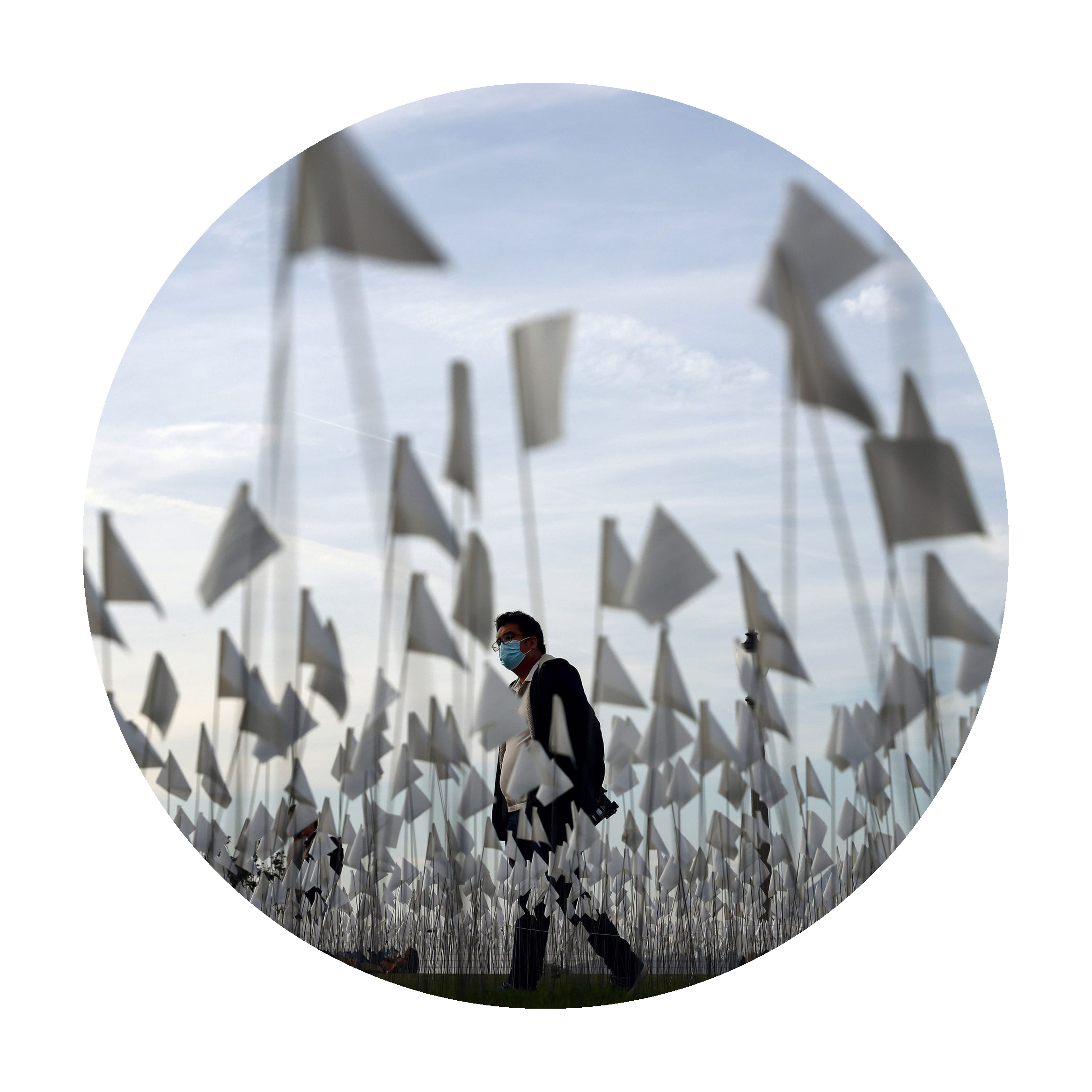
There were so many questions to answer: How do I know if I have it, and what can it do to me? How can I keep my family safe? What exactly is a pandemic? Back then, it felt like there wasn't much we could do but relearn to wash our hands properly. But soon we would empower readers by explaining everything from ventilation to vaccines: Were schools safe? Do masks even work? Is this thing airborne?
Hundreds of thousands would die. Vaccine adoption slowed and the government's messaging was confusing. By year's end, we began looking back at what we had collectively endured, and in 2021, USA TODAY reporters won a National Press Foundation award for stories showing how the Centers for Disease Control and Prevention's dysfunctional response to COVID-19 affected local communities across the nation. We weren't out of the woods then, and we aren't yet. Emerging variants and the politicization of public heath challenge us to this day. But as the virus evolves, so do we, and USA TODAY journalists will continue to do our best to answer your questions and keep you safe.

2021: How 1961 changed America
The ongoing struggle for civil rights had its roots in the racism of the 1960s. In a shared reporting project with the USA TODAY Network, individual stories from seven days in 1961 were told in a variety of formats.

Included were remembrances of the first Black student at the University of Georgia; fights over the simplest of things – seats at a lunch counter – in South Carolina (told in graphic novel form); an opportunity (in augmented reality) to experience the terrors facing Freedom Riders; and Black students fighting everywhere for rights and dignity.
If journalism is embarked on new forms of storytelling, “Seven days of 1961” helps show the way.

2021: A search for peace in Minneapolis
Throughout the battles over the 2020 election and the crippling pandemic, Minneapolis found itself the unwilling ground zero for the biggest civil rights battle of the 21st century: the killing of a Black man, George Floyd, under the knee of a police officer while other cops watched.
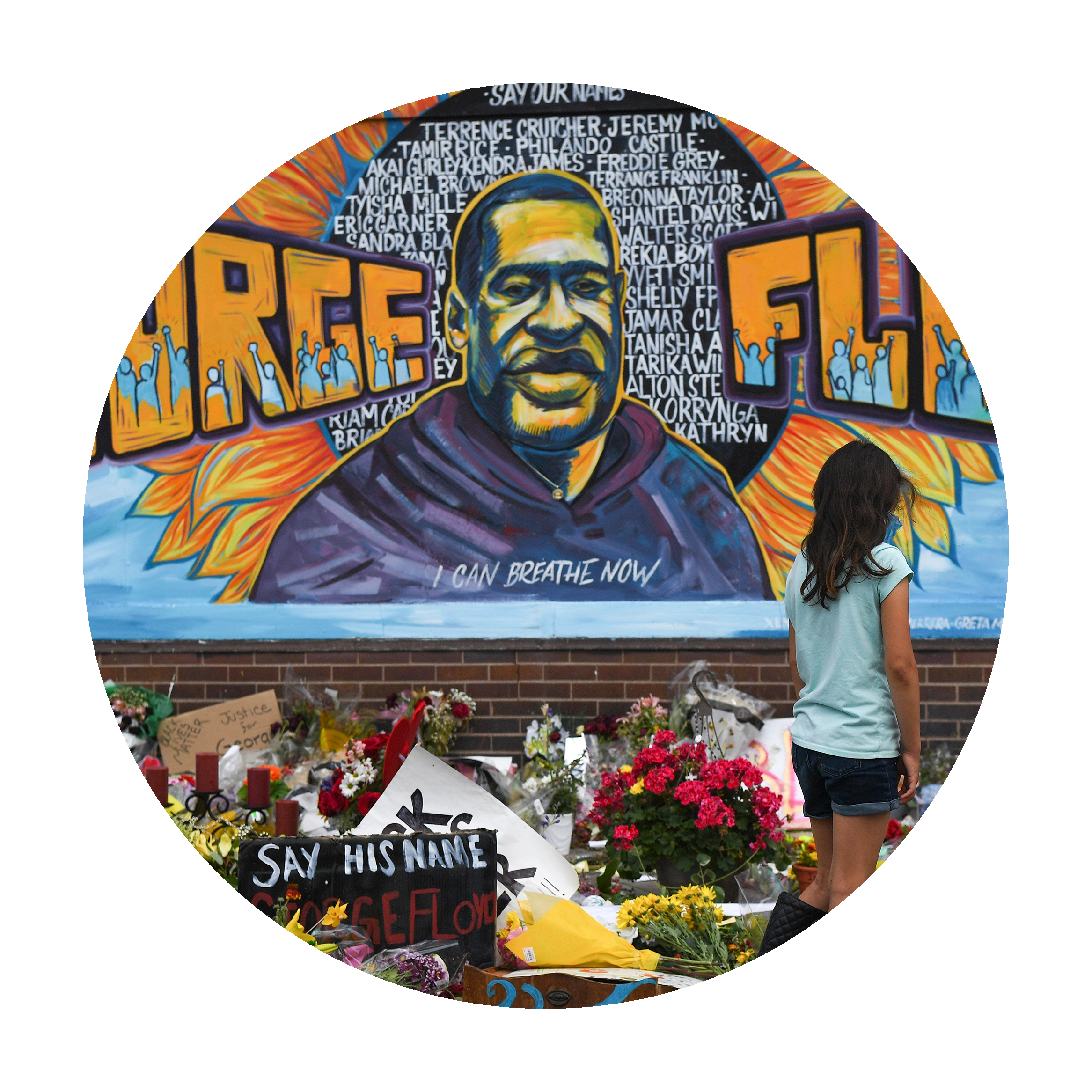
The nationwide protests and condemnation were covered day and night live on cable TV. When a trial verdict was finally announced – former police officer Derek Chauvin found guilty of murder – a community breathed a sigh of relief. This and much more was captured in an extraordinary video, a documentary by Jarrad Henderson and Harrison Hill, giving voice to ordinary citizens and their reactions.
Correction/clarification: An earlier version of this story incorrectly reported the year for the Miracle on Ice Olympic hockey game. The game between the United States and the team representing the Soviet Union was played at the 1980 Winter Games in Lake Placid.